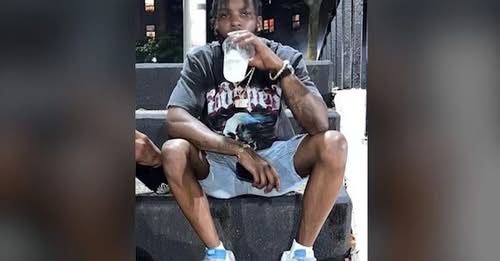The Car Didn’t Stop for Help — It Drove Straight to Wynn Hospital
In the quiet hours of the night, the city briefly held its breath. Sirens hadn’t yet begun to wail. Lights hadn’t started to flash red and blue. But the stillness was broken—violently. Near the intersection of Kemble and Walker, a series of gunshots cracked through the silence, echoing off brick walls and empty sidewalks. Somewhere in the dark, chaos erupted. And somewhere else, a car accelerated away from the scene, its tires biting into the pavement with urgency and fear.
Inside that car, 33-year-old Omar Mitchell was bleeding. He wasn’t calling for help. He couldn’t. The bullets had already done their damage. His lifeblood was seeping into the seats, and time was draining away with it. The driver didn’t pull over, didn’t wait for EMTs, didn’t call for backup. There was only one thought: get to the hospital. Fast.
Wynn Hospital’s emergency room saw the car screech into its driveway. Staff rushed outside, already bracing themselves for what they might find. They pulled Omar from the vehicle and rushed him inside. Machines buzzed, voices raised in urgency, hands worked with precision. But the damage was too great. The bullets too many. The bleeding too heavy.
Omar Mitchell was pronounced dead not long after arriving. Another young life lost to a city’s violence. Another family shattered by a moment of senseless brutality.
Police had responded swiftly. The gunshots hadn’t gone unheard—ShotSpotter, a system built to listen for and locate gunfire in urban environments, picked up the blasts instantly. It sent the coordinates to dispatchers, who alerted units nearby. Officers raced toward Kemble and Walker. They saw one car fleeing the scene and followed. That chase ended not in a confrontation, but at a hospital, where the harsh reality of the night became heartbreakingly clear.
Now, in the aftermath, questions remain. Who pulled the trigger? Why was Omar targeted? Was he caught in the crossfire, or was he the intended mark? Investigators are working those leads now, piecing together the final minutes of Omar’s life with surveillance footage, witness interviews, and the data from ShotSpotter.
But for Omar’s loved ones, those answers may offer little comfort.
He was more than a crime statistic. He was a brother, a friend, maybe a father, a son. Someone’s whole world. People remember his laugh, the way he looked out for people he cared about, the times he stayed up too late talking about dreams and plans. All of it now reduced to memories, echoes of a voice that will never speak again.
The city continues to move. The news cycle spins on. But for a few blocks in one neighborhood—and for a few people who can’t stop replaying that night in their heads—everything has changed. A man died. Not on a battlefield. Not in an accident. But on familiar streets that turned violent in an instant.
And a car, desperate and determined, didn’t stop to call for help. It drove straight to the hospital, carrying a man who didn’t make it.

Leave a Reply